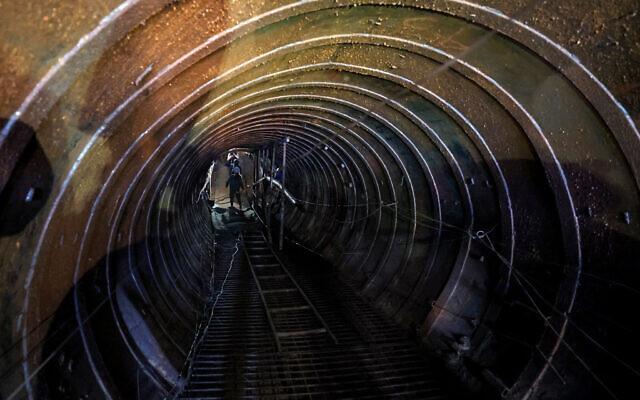
Hamas leaders reportedly communicating using handwritten notes carried by runners
Hamas leaders, hunkered down in subterranean bunkers in the Gaza Strip, are reportedly communicating with each other using handwritten notes carried around the war-torn territory by runners.
The memos are even enabling communication with senior officials abroad, the Saudi-owned Arabic daily Asharq Al-Awsat reported Tuesday.
The London-based outlet revealed aspects of the secret communications system used by the terror group’s chiefs to exchange messages without being detected by Israeli intelligence.
The war erupted when Hamas attacked Israel on October 7, 2023, killing some 1,200 people and abducting 253 as hostages.
Israel responded with a military campaign to destroy Hamas, remove it from power, and release the hostages.
Since October 7, Hamas political and military leaders inside Gaza have been sheltering inside the massive tunnel system that crisscrosses the coastal Strip’s underground. Little is known about how they liaise with each other from different parts of the enclave and make decisions, such as formulating positions in negotiations via mediators with Israel, and how they consult with top Hamas officials abroad.
Citing sources close to the Hamas leadership, Tuesday’s report said Hamas relied up until the outbreak of the war on a terrestrial communications network that was initially developed by engineers of its military wing in 2009 and was upgraded over the years with technology smuggled into Gaza from abroad. Switchboards were reportedly installed underground and connected to old landlines aboveground.
Each political and military leader had a personal contact point with a number, and networks were constantly monitored to prevent wiretapping. Maintenance was conducted every month, the sources added.
Israel was reportedly aware of the existence of the system and launched several attempts to hack it or disable it. One successful attempt was conducted in May 2018, when the IDF managed to blow up an exchange point in the central Gaza Strip and kill a group of Hamas engineers repairing a fault, the sources recounted.
The system was said to still be in place at the outbreak of the war. While some of the switchboards and tunnels in which cables ran were destroyed by Israeli forces in subsequent weeks, the sources said that the network could still enable intensive communications between Hamas leaders in November, as they deliberated a proposal for a seven-day truce with Israel and a partial release of hostages. The deal eventually went through and 105 hostages were released in exchange for three times as many Palestinian security prisoners held in Israel, and an increase in humanitarian aid to the Strip.
Some Hamas aides were reportedly tasked with looping in the group’s leadership abroad, particularly in Beirut and Doha, through the use of encryption software the terror organization had acquired from outside Gaza.
The sources added that the network was also employed to communicate with leaders of the allied Palestinian Islamic Jihad terror group, to which Hamas had previously provided dedicated contact points. The report speculated that the system was used to coordinate between the two terror groups to decide which hostages to release during the November truce, noting that in several instances members of the two groups appeared together aboveground as the abductees were handed over to the Red Cross.
The lull in fighting fell apart after a week, with Israel accusing Hamas of violating the terms. Since then, the IDF has advanced further inside Gaza, forcing Hamas leaders to resort to a more rudimentary method of communication – written messages on pieces of paper carried by Hamas members and collaborators from one location to another.
The same method is now being used to convey messages to those Gazans who liaise with the leadership abroad, the sources said. The latter, however, are not entitled to make decisions without the approval of the top leaders inside the Strip, in particular Yahya Sinwar.
Source » timesofisrael.com





